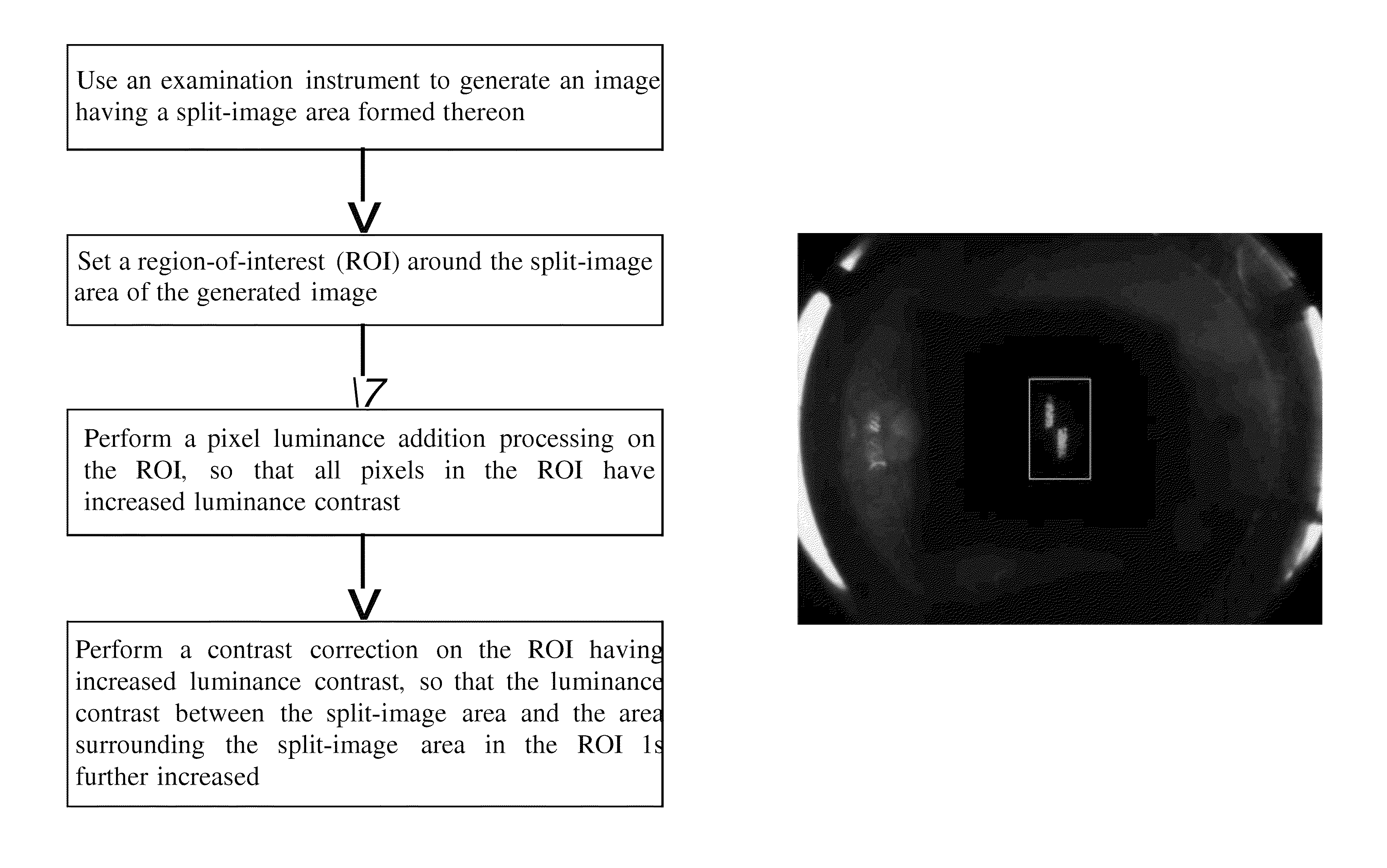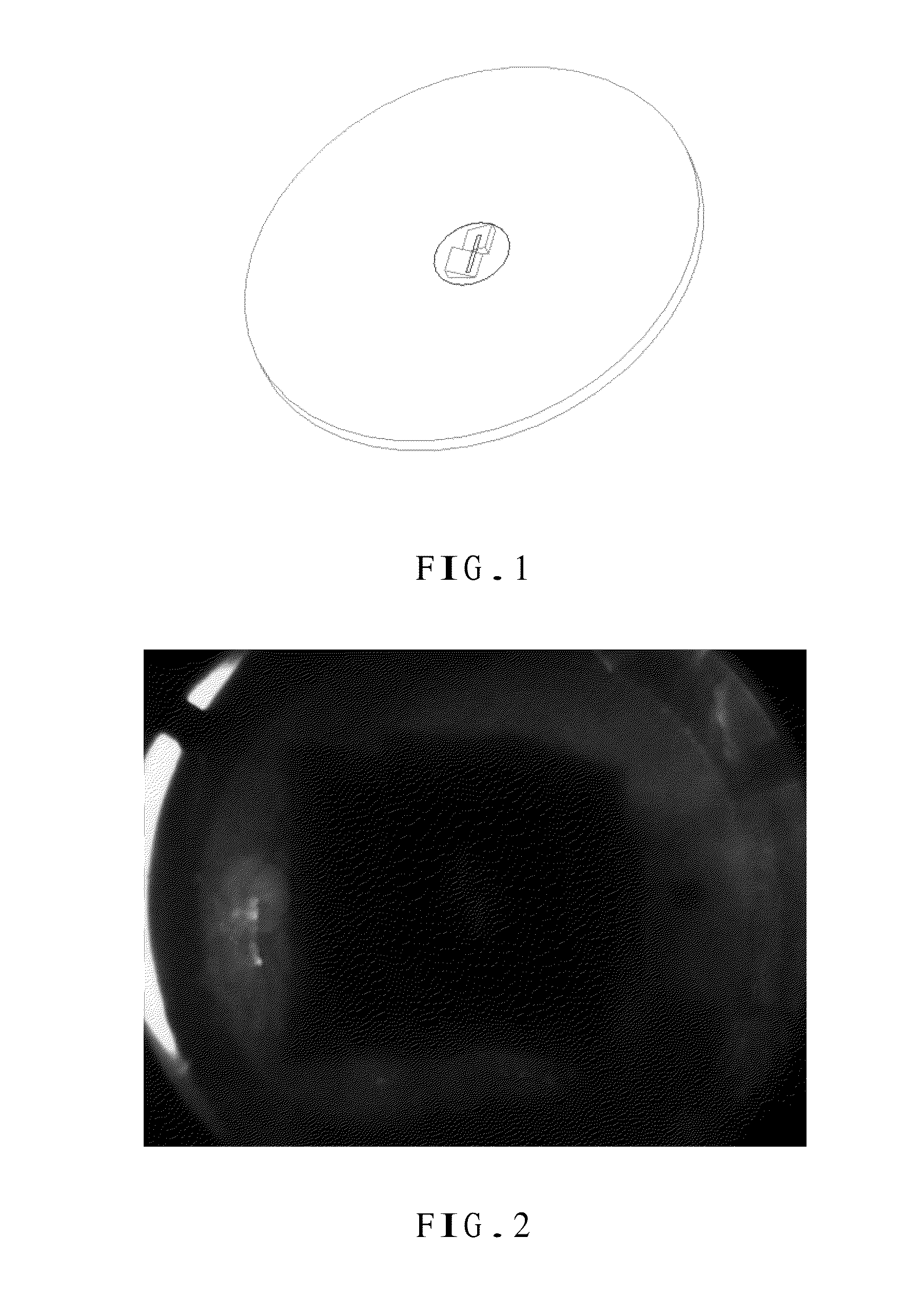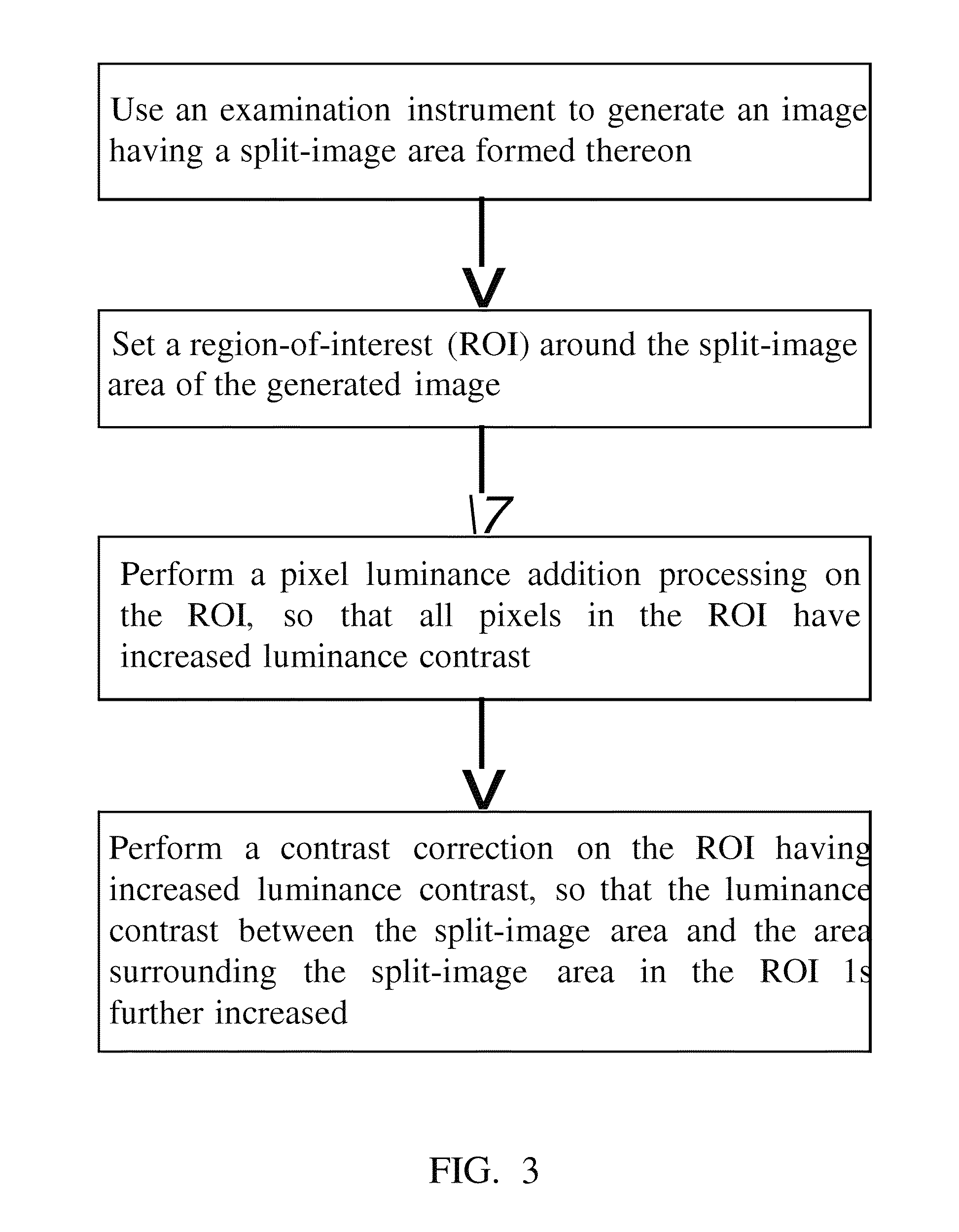Image-recognition method for assisting ophthalmic examination instrument
a technology of image recognition and ophthalmology, applied in the field of image recognition, can solve problems such as difficulty in assisting examiners to clearly recognize, and achieve the effects of increasing luminance contrast, increasing sharpness and luminance contrast, and increasing luminance contras
- Summary
- Abstract
- Description
- Claims
- Application Information
AI Technical Summary
Benefits of technology
Problems solved by technology
Method used
Image
Examples
Embodiment Construction
[0018]The present invention will now be described with a preferred embodiment thereof and with reference to the accompanying drawings.
[0019]Please refer to FIG. 3, which is a flowchart of an image-recognition assisting method according to a preferred embodiment of the present invention. As shown, the image-recognition assisting method of present invention includes the following steps:[0020](a) Using an examination instrument to generate an image having a split-image area formed thereon;[0021](b) Setting a region-of-interest (ROI) around the split-image area of the generated image;[0022](c) Performing a pixel luminance addition processing on the ROI, so that all pixels in the ROI have increased luminance contrast; and[0023](d) Performing a contrast correction on the ROI having increased luminance contrast, so that the luminance contrast between the split-image area and the area surrounding the split-image area in the ROI is further increased.
[0024]Please refer to FIG. 2. The examinat...
PUM
 Login to View More
Login to View More Abstract
Description
Claims
Application Information
 Login to View More
Login to View More - R&D
- Intellectual Property
- Life Sciences
- Materials
- Tech Scout
- Unparalleled Data Quality
- Higher Quality Content
- 60% Fewer Hallucinations
Browse by: Latest US Patents, China's latest patents, Technical Efficacy Thesaurus, Application Domain, Technology Topic, Popular Technical Reports.
© 2025 PatSnap. All rights reserved.Legal|Privacy policy|Modern Slavery Act Transparency Statement|Sitemap|About US| Contact US: help@patsnap.com



